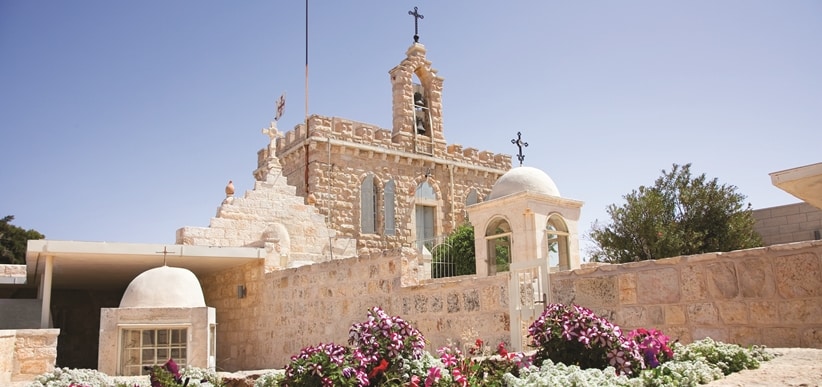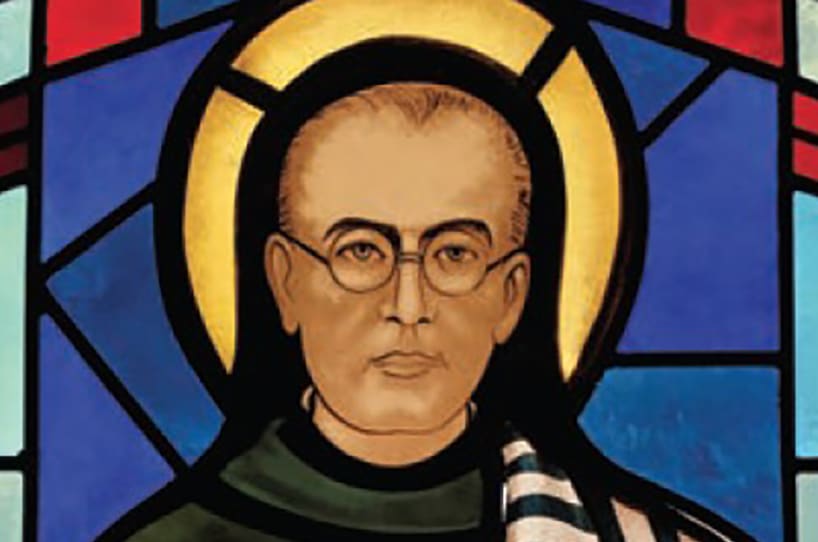Shutterstock
Likely the best description of St. Elizabeth of Hungary is to say that she was, in a way, the antithesis of the rich young man described in Matthew’s Gospel. The young man turned away when Jesus said: “If you wish to be perfect, go sell what you have and give it to the poor, and you will have treasure in heaven. Then come, follow me” (Mt 19:16-22).
St. Elizabeth, born into nobility with every luxury and advantage, spent her entire life seeking to do just what the young man wasn’t willing to do: give away everything she possessed and follow Jesus.
Born in 1207, Elizabeth was the daughter of King Andrew II of Hungary and the niece of St. Hedwig. A political pawn, at age 4 she was betrothed to the son of the landgrave (or ruler) of Thuringia, Germany. The landgrave was Hermann; his son, Louis, was 10 years old when Elizabeth arrived to live in her new home at the Castle Wartburg near Eisenach. Raised among nobility, at 14 she married Louis, who was then 21. Their commitment, love and devotion to Jesus and to one another serves as a model for young married couples.
Boundless generosity
From childhood, the young princess tried to walk in the footsteps of Jesus and St. Francis of Assisi, always seeking to live in an austere and humble manner. But being the wife of a powerful nobleman made such a life difficult. Others in the castle kept demanding that she act in the manner of the upper class and refrain from her intimate association with the classless peasants. Once when attending Mass in her royal garb, she fell before the statue of our crucified Jesus and took off her royal crown, saying she could not wear her crown of gold before the one who wore a crown of thorns. Her family, although not her husband, chastised her severely and told her that was not the way to act. Elizabeth paid them little heed.
Her compassion and charity for the poor, the hungry, the homeless and the sick had no bounds. She often gave away food supplies from the castle pantry much to the chagrin of others. She built a hospital at the foot of the castle and worked there several days a week. When she was in the castle, she arranged for those in need to come and be fed among the interior finery. Anyone sick received attention; if someone needed clothes, Elizabeth found something for them.
Often, she made trips outside the castle looking for the marginalized and providing whatever they required. She was seen walking in a leper colony bringing aid and comfort to those shunned people. When her personal funds were exhausted from assisting others, she sold her jewelry in order to continue helping the needy families near the castle.
Nobility to pauper
The year 1226 was especially bad for the people in Eisenach and all of Germany. A great famine swept across the country, crops failed everywhere, and the winter brought rampant disease that wiped out herds of cattle and sheep. Elizabeth responded by giving away even more of the food stored in the castle. She dressed as a common peasant, selling her gowns and dresses, then she used the funds to keep others from starvation or sickness.
While her total spirit of poverty was resented by most in the castle, her husband would find no fault with her and mostly encouraged her activities. The love between Elizabeth and Louis was remarkable. However, in 1227, Louis died en route to a crusade in the Holy Land, leaving his wife and three children. Elizabeth was devastated and mourned for months. Now her care for the poor would be challenged by her husband’s family. They denied her any castle possessions that she would likely give away. Elizabeth chose to leave the castle, taking her children with her into the town of Eisenach, only to discover that, because they feared retribution from the landgrave, no one would help her. She soon sent her children away to be cared for by others and, cut off from all her inheritance, became a beggar.
For months, she lived penniless, surviving day to day. Eventually, she received some of her inheritance and used it to build a hospital in Marburg, Germany, where she helped care for the sick and injured. She gave away all her remaining funds to the poor.
Before Louis died, he arranged for a German priest named Conrad of Marburg (d. 1233) to be St. Elizabeth’s spiritual adviser. Conrad had been selected by Pope Innocent III (r. 1198-1216) to seek out and eradicate heretics and heresies that had taken root in Germany. Often brutal in his methods, Conrad excelled at this task. He was stern in character, pious and well-versed in the Scriptures. He despised anyone who was not a Christian or who faulted Church practices. He believed every Christian should live void of earthly distractions. He imposed his beliefs on Elizabeth demanding she give up everything, even her friends — anything that could stand between her and God. His relationship with Elizabeth was often harsh and exacting. Despite his methods, Elizabeth remained loyal to Conrad’s direction.
A model for all
In 1228 Elizabeth joined the Third Order of the Franciscans and sought an even simpler existence. She lived among the poor, trying to eke out a living and helping others through work as a seamstress.
Her health slowly deteriorated, and on Nov. 17, 1231, at age 24, she died. Her feast is celebrated Nov. 17.
The good she did for others during her short life is impossible to quantify. She was a model wife, mother, widow and saint. She was canonized only three years after her death by Pope Gregory IX (r. 1227-1241).
Besides being raised to the altar of sainthood, her life is recalled in numerous books, poetry and art; hospitals and churches bear her name. The beautiful St. Elizabeth’s Church in Marburg, Germany, is dedicated to her, and many say it is the grandest monument ever raised for a woman.
D.D. Emmons writes from Pennsylvania.
| Acclaim for Canonization |
|---|
|
Conrad of Marburg, St. Elizabeth’s spiritual adviser, wrote a letter in support of her canonization: “Elizabeth was a lifelong friend of the poor and gave herself entirely to relieving the hungry. She ordered that one of her castles should be converted into a hospital in which she gathered many of the weak and feeble. She generously gave alms to all who were in need, not only in that place but in all the territories of her husband’s empire. She spent all her own revenue from her husband’s four principalities, and finally she sold her luxurious possessions and rich clothes for the sake of the poor. “Twice a day, in the morning and in the evening, Elizabeth went to visit the sick. She personally cared for those who were particularly repulsive; to some she gave food, to others clothing; some she carried on her own shoulders, and performed many other kindly services. Her husband, of happy memory, gladly approved of these charitable works. Finally, when her husband died, she sought the highest perfection; filled with tears, she implored me to let her beg for alms from door to door. Good Friday of that year, when the altars had been stripped, she laid her hands on the altar in a chapel in her own town, where she had established the Friars Minor, and before witnesses, she voluntarily renounced all worldly display and everything that our Savior in the Gospel advises us to abandon. Even then, she saw that she could still be distracted by the cares and worldly glory which had surrounded her while her husband was alive. Against my will, she followed me to Marburg. Here in the town, she built a hospice where she gathered together the weak and the feeble. There she attended the most wretched and contemptible at her own table. Apart from those active good works, I declare before God that I have seldom seen a more contemplative woman.”
|







